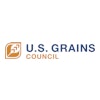
China shook up the U.S. feed grain export market over the last year, purchasing massive quantities of U.S. soybeans, sorghum and corn. With the help of a favorable exchange rate, China increased its purchase from the U.S. to meet feed demand for its rising hog production and to offset reduced supply from Brazil. China’s accelerated demand for grains is expected to continue, although its purchasing patterns are shifting in response to U.S. grain market dynamics.
According to anew report from CoBank’s Knowledge Exchange, the outlook for continued U.S. grain exports to China remains strong, primarily due to its projected growth in pork production and steady demand for feed grains. However, the current U.S. grain run has entered a new phase marked by significant price volatility, and China is leveraging that volatility to its advantage.
“China will remain an active buyer of U.S. grain through at least the 2021-22 marketing year,” says Kenneth Scott Zuckerberg, lead grain and farm supply economist with CoBank. “But the increased volatility in grain prices has led China to shift its buying pattern to wait for price weakness before committing to additional purchases, as well as to contract now for the next marketing year.”
中国的高度需求导致了历史新高grain prices that peaked in May and have since been extremely volatile. A period of elevated price volatility, coupled with an ongoing inverted futures curve, means that grain elevators and merchandisers will require capital discipline and excess liquidity, noted Zuckerberg.
So far in 2021, the U.S. has already exported an eye-popping 57.1 million metric tons (MMT) of soybeans, corn and grain sorghum to China. That’s a dramatic increase compared to the 15.5 MMT China purchased over the same period in 2020 and 7.9 MMT purchased in 2019. Adding to the momentum, China has already contracted for 10.7 MMT of new crop corn and 3.0 MMT of soybeans to be delivered after harvest and recorded during 2021-22 crop marketing year.
“Barring cancellations, these orders lend confidence that U.S. feed grain exports to China will continue to be strong during the next six months,” said Zuckerberg.
Since May 2020, China has aggressively purchased soybeans and corn as feed to rebuild its domestic swine population following a devastating outbreak of African Swine Fever (ASF). While hog slaughter in China declined in 2019 and 2020 due to AFS and COVID, slaughter is expected to increase meaningfully in 2021. USDA projects China’s hog slaughter will climb to 520 million head in 2021 after dropping to 460 million last year.
The University of Missouri Food & Agricultural Policy Research Institute (FAPRI) has gone even further, recently increasing its 2021 China hog slaughter estimate from 520 million head to 630 million, a 21% increase which would precipitate a similar increase in grain demand.
Per capita consumption of animal protein in China has nearly tripled in the past 40 years, with pork accounting for most of the growth. China imports the majority of grain used in pork production.
“The combination of steady pork production, higher slaughter rates and currency tailwinds suggests the Chinese appetite for U.S. feed grains will remain strong,” said Zuckerberg.
Read the report,Feeding the Hungry Dragon: China Changes Buying Tactics in Volatile Phase of U.S. Grain Run.
AboutCoBank
CoBank is a $160 billion cooperative bank serving vital industries across rural America




















